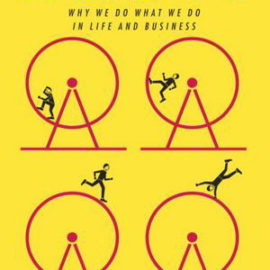Want to learn the ideas in How The Mighty Fall better than ever? Read the world’s #1 book summary of How The Mighty Fall by Jim Collins here.
Read a brief 1-Page Summary or watch video summaries curated by our expert team. Note: this book guide is not affiliated with or endorsed by the publisher or author, and we always encourage you to purchase and read the full book.
Video Summaries of How The Mighty Fall
We’ve scoured the Internet for the very best videos on How The Mighty Fall, from high-quality videos summaries to interviews or commentary by Jim Collins.
1-Page Summary of How The Mighty Fall
Overview
If something is going wrong, don’t ignore it or blame someone else. Look at why the problem is happening and see how you can solve it yourself. Have you ever wondered where big companies go? Or brands that were popular but now seem to have disappeared? Cell phone manufacturer Nokia and photography company Kodak are examples of this phenomenon. Where did they all go?
The author of this book conducted years of research on successful and not-so-successful businesses, and found that the reason why some succeed while others fail is because of their leaders. The right kind of leader can help a business grow even in difficult times, but the wrong type will steer it towards failure. This book shows you what type of leader to look for in your organization or business venture.
In this article, you’ll learn why nobody has a Nokia anymore and how one company tried to launch a product every day.
Big Idea #1: Everyone knows that companies and institutions can decline, even the greatest ones.
The Roman Empire was the most powerful empire in Europe and the Middle East. It lasted for centuries, but eventually disappeared within a couple of centuries after Christ’s birth.
The fall of the Roman Empire is an example that no matter how successful or powerful something is, it’s always in danger of collapsing. The collapse of a large organization is self-inflicted and can be attributed to mismanagement.
Nokia was the leading phone company 15 years ago, but it has since lost its market share. How did this happen?
While Apple and Samsung were making smartphones, Nokia decided to make other products. When the smartphone became popular, Nokia was not part of that race.
It’s important to point out that we’re not talking about being lazy. Failing companies don’t fail because they’re too lazy, but because they act in the wrong way. In fact, failing firms often show very high levels of innovation and energy.
Bank of America is a great example of this because, in the 1980s, they were eager to update outmoded practices. They hired a young CEO and ended the practice of hiring people for life. Despite these changes, the company posted some spectacular losses.
Big Idea #2: After experiencing great success, companies tend to become arrogant. This can lead them to fall prey to hubris.
You may or may not be familiar with the classic Greek dramas.
In Greek tragedies, heroes often end up failing because they’re overconfident. Companies can also be too confident and fail if they try to do too much.
Motorola was a very successful company in the late 1980s and early 1990s. However, they became overconfident and made mistakes.
Motorola made a mistake with the StarTAC. They failed to see that competitors were moving towards digital technology, and they continued to produce an outdated product. Motorola was arrogant in thinking that their customers wouldn’t want anything else, and they lost market share because of it.
Another danger of overconfidence is neglecting your core business.
When companies are successful, they sometimes look to branch out from their main market into new areas. Sometimes they forget what made them successful in the first place.
Circuit City was a successful company that started exploring other markets. They tried selling used cars and renting DVDs, among others. In order to succeed in those areas, they had to devote a lot of time and resources – so much so that the original business suffered as a result.
Like this summary? Want to learn more from books than ever? You'll love my product Shortform.
Shortform has the world’s best guides to 1000+ nonfiction books and articles. Even better, it helps you remember what you read, so you can make your life better. What's special about Shortform:
- The world's highest quality book guides - we discuss the book's main ideas, with expert analysis and commentary expanding will beyond the book
- Interactive exercises that teach you to apply what you've learned
- Discussion communities - get the best advice from other readers
Sound like what you've been looking for? Sign up for a 5-day free trial here.
The company’s main area of business was hit hard, and eventually it went under.






